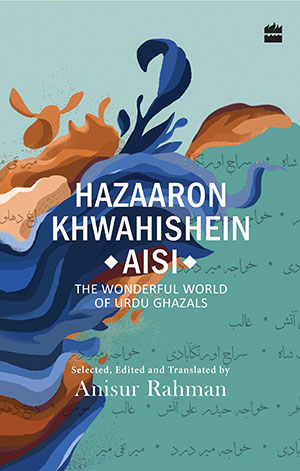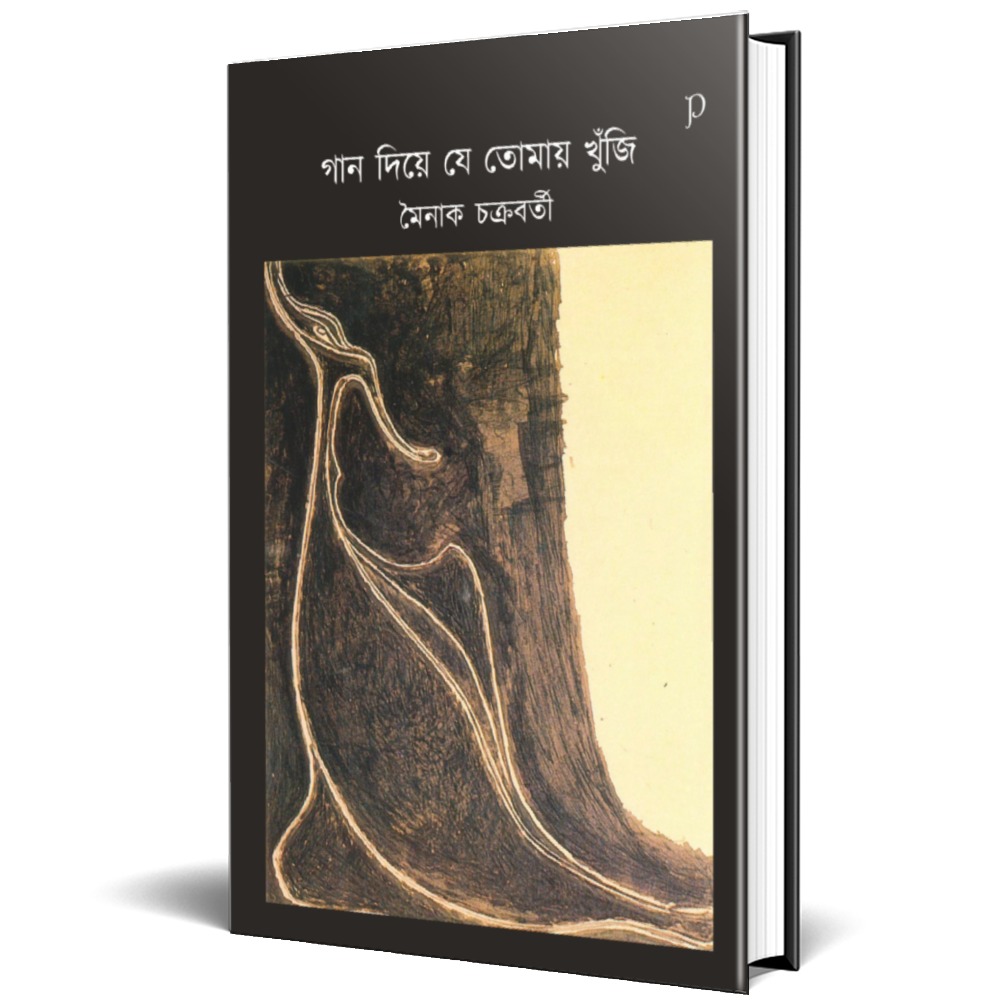Poeticizing Urdu Literature: A Review of Hazaaron Khwahishein Aisi: A Wonderful World of Urdu Ghazals by Anisur Rahman by Sumbul Nasim
Poeticizing Urdu Literature: A Review of Hazaaron Khwahishein Aisi: A Wonderful World of Urdu Ghazals by Anisur Rahman
Book: Hazaaron Khwahishein Aisi: The Wonderful World of Urdu Ghazals
Author: Anisur Rahman
Publisher: HarperCollins
Year of Publication: 2019
Pg: 456
Price: Rs. 599
“Hazaaron Khwahishein Aisi”—This very poetic title (which means ‘Hundreds of such desires’), taken from Ghalib’s one of the most famous couplets, of Anisur Rahman’s 2019 book seems perfectly appropriate since the book is on Urdu ghazal, the most well-known and poetic genre of Urdu literature. The subtitle of the book “The Wonderful World of Urdu Ghazals” is remarkable as well. Ghazal is indeed a wonderful poetic form that has charmed the readers and listeners ever since its inception. Even if one does not know anything about Urdu language or literature, he / she appears familiar with Ghalib and the word “ghazal”! A ghazal is a type of poem which consists of at least four independent couplets. It follows a particular metrical frame and rhyme scheme as well as employs refrain. Rahman’s book is a must read for non-Urdu knowing lovers of Urdu as it provides aesthetic and literary pleasure through its English translation of beautiful ghazals besides giving the actual ghazals in Roman letters. The book is divided into seven chapters prefixed by “Foreword” and “Preface” (“Foreword” by the noted contemporary writer Tabish Khair), and suffixed by “Translator’s Note” and “Shukriya” (using the Urdu word for “Acknowledgement” section which is quite a novel innovation!). The book is dedicated to Rekhta Foundation and its founder Sanjiv Saraf, and what can be more poetic than using Ghalib’s couplet on love as epigraph of a poetic book like this which we find here?
The “Preface” of the book is most appropriately titled “Ghazal: Pretext, Text, Context” which is packed with information related to the inception of ghazal form and its subsequent development across the world in various countries and various languages. The “Preface” gives a comprehensive idea of the evolvement of ghazal, beginning with the very etymology of the word “Ghazal” and how this poetic form had its origin in the mu’allaqaat or the golden odes in northern Arabia in the mid-sixth century. Rahman goes on to charter its journey in Persian, Turkish, Azerbaijani Turkish, etc. It is highly fascinating to read about the interest of the Western world in this quintessential Eastern literary form. It was the irresistible charm of ghazal that even the Western world was lured towards it and made significant contributions in its development and enrichment. The German Friedrich Schlegal, Johann Wolfgang von Goethe, the Spanish Federico Garcia Lorca, the American Adrienne Rich, John Hollander, the Canadian Jim Harrison, John Thompson, the Australian Judith Wright are among others who wrote ghazals and enriched this genre. The Canadian poet Phyllis Webb even evolved the concept of ‘anti ghazal’ in which she turned the conventional valorizartion of the female figure upside down. India too played a very important role in enriching this literary form as the poets of different Indian languages experimented with it. The ‘Preface’ also tells us the essential features of a ghazal structurally and thematically and how it has been instrumental in cultivating, as Rahman says, “a culture where the poets have emerged as social icons and their readers and listeners as figures of cultivated manners” (13).
It is noteworthy that Rahman does not eschew the criticism which has been levelled against ghazal as it being useless on the ground that the poet talks from an unreal imaginary world and obfuscates readers. Rahman counters this argument like a true admirer of ghazal and one cannot disagree with him. Rahman concludes the ‘Preface’ by discussing ghazal in various contexts, that is, in the contexts of language, cultural historiography, socio-political history, comparative studies and critical reception. This deliberation of ghazal in the light of various contexts brings to the fore various important aspects of this poetic genre and broadens our understanding of it. Keeping up with the ‘ism’ way of reading a text, Rahman also suggests psychoanalytic, feminist, post-colonial, cultural-materialism, etc. way of approaching a ghazal.
To trace the development of ghazal in Urdu, Rahman gives us seven chronological periods in separate chapters with these titles—“Metaphysical Beginnings”, “Towards Enlightenment”, “Romance of Realism”, “Advent of Modernism”, “Progressive Poetics”, “New Poetics” and “Beyond New Poetics.” Rahman’s method has been to choose some significant poets from each period, to introduce them to the readers with some biographical and literary information, and to present two ghazals by each of those poets in the original language (written in Roman letters) as well as the English translation of those ghazals by Rahman himself. Rahman begins with two Deccan poets, Mohammad Quli Qutub Shah and Vali Deccani whom he accredits as the pioneers of the “great tradition of Urdu poetry that flowered in various parts of northern India later” (19). Along with these two, Rahman includes Mirza Mazhar Jan-e Janan as well in the first chapter as one of the significant pioneers of ghazal form. Rahman includes many Pakistani poets also in his cataloguing of the historical and literary development of ghazal, and does not seem to be bothered about the cross-border jump.
Coming to the English translation of so many ghazals of so many poets, one can only say that Rahman has done a laudable job since compared to prose, translating poetry is far more difficult, and Rahman here translates one of the very tricky literary forms (which, in the first place, is not easy to compose maintaining all its essential features of rhyme, meter, refrain, etc.) into a foreign tongue and he does it with élan. The English translations of these ghazals do complete justice to the original version, and only a richly-cultivated, well-read and highly skilful translator can do so. It is interesting to read his translation of the ghazals of Mohammad Quli Qutub Shah and Vali Deccani which are not even in the modern polished Urdu. The book indeed makes for a wonderful read as one not only gets a collection of so many beautiful ghazals along with their English version but also the necessary background information about the ghazal form in one compilation.
Works Cited
Rahman, Anisur. Hazaaron Khwahishein Aisi: The Wonderful World of Urdu Ghazals. HarperCollins, 2019.











Comments